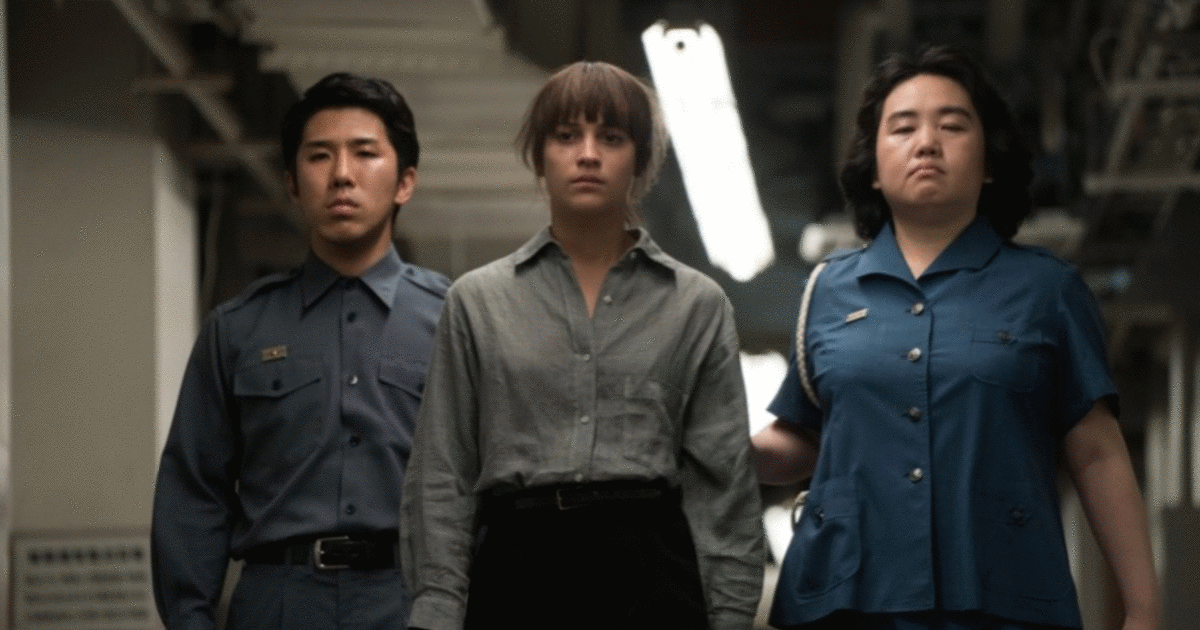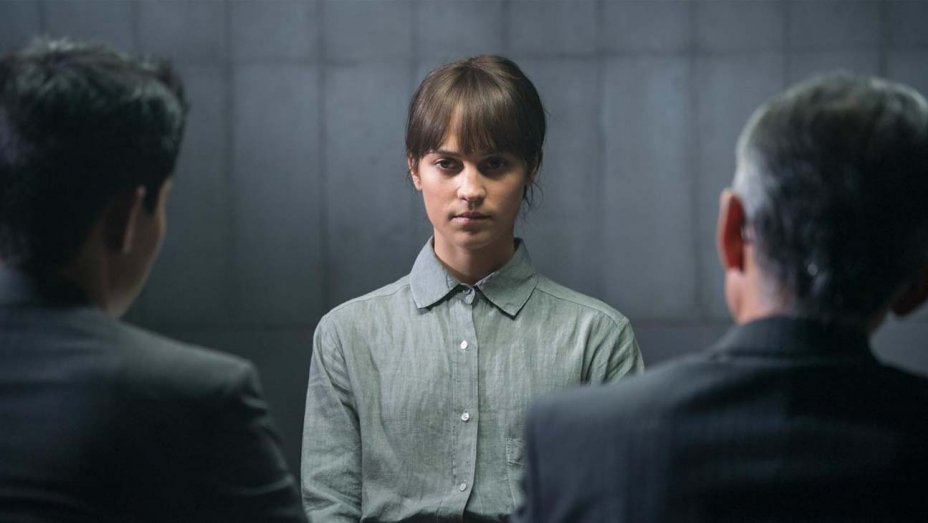Starring Alicia Vikander and Riley Keough, Netflix’s new crime thriller, ‘Earthquake Bird‘, is unlike any other out there. Set in the late 80s, the film presents itself in several layers where, on the surface, it typically revolves around the young English woman, Lucy Fly, who tries to escape her past by working in Tokyo as a translator. After being taken into police custody for the murder of her friend, Lily, she begins to relive all the moments of her past that could have possibly led to Lily’s death. What starts off as a tale of her obsession with a charming Japanese photographer soon turns into her own vivid reminiscences of trauma, jealousy, and most of all, guilt.
Is Earthquake Bird Based on a True Story?
Unlike most suspense noir films, ‘Earthquake Birds’ presents itself in such a way that its narrative is not merely confined to a short-term mystery, instead, it subtly unfolds itself with several simultaneous storylines, most of which, are portrayed from the perspective of the main character. While some might call it a bit ragged on the edges as it never really confines itself to a particular genre, others will be able to appreciate it for its refreshing approach. If you look closely, you’ll be able to observe how the film drifts between several timelines and presents itself as a puzzle for the viewer, where you are expected to put together all of its bits and pieces.
One big reason why its narrative often gets so complex is that ‘Earthquake Bird’ has been adapted from the novel of the same name by Susanna Jones. The film, for the most part, is a work of fiction and is not based on a true story. However, like most crime-thrillers, it might have some subliminal links with a real-life story. Read further to know more about this.
How Different is Earthquake Bird from the Original Novel?

When it comes to the basic premise, the film, by and large, remains loyal to its source. Everything from its 80s Japanese setup to the name of its characters remains exactly the same. While the dispositions of its characters are also quite similar, the book is a bit more articulate in this aspect as, unlike the movie, it does not sideline Lily’s character and eloquently describes how Lucy even learned to value her friendship towards the end. Also, in the first half of the book, Sussana Jones often uses shafts of irony and humor to mildly tone down the nerve-wracking tension in its storyline. In contrast to this, the film’s narrative rarely makes an attempt to drift away from its gravely serious tone.
Sussana Jones’ choice of words naturally creates a tense atmosphere that is complimented with subtle foreshadowing and internal monologues of its main character. With dialogues like “I had been in possession of a lover and a friend. Now I had neither. They had stolen themselves from each other and me,” and “The defendant must decide how to plead. And here is my plea. Not guilty, but not not guilty…. I, of all people, should not be too hasty to judge,” the novel deeply immerses you into the mood of its story by very well reflecting on the psyche of its character.
Compared to this, while the movie does involve similar elements, it also uses its bleak visuals and dull color grades to create an atmospheric experience for its viewers. It also uses several Japanese soundtracks to familiarize the viewer with its setting. Using its cinematography, it allows the viewer to have the distant perception of the protagonist to her surroundings and with lights and contrasts, it presents the Japanese Megapolis from the eyes of an outcast. Moreover, while the story of the novel relies entirely on the structure of its narrative to effortlessly shift between its timelines, in the film, the editing plays a key role in familiarizing the viewer with the past and present events of the main character.
Is Earthquake Bird Inspired from True Events?

Apart from the obvious psychological noir and character-centric themes of the film, as its many layers begin to unfold, it also sheds light on cultural alienation, one’s mental health, and also, the interactions between the immigrant community with the native Japanese. While ‘Earthquake Bird’, predominantly, comes off as a work of fiction, it can be relatable for a lot of viewers in certain ways.
Furthermore, its storyline also has some striking resemblance to the real case of Lucie Blackman. Lucie had traveled to Tokyo with one of her friends and had later become a victim of Joji Obara, a Korean serial-killer, who was convicted for sexually abusing more than 150 women in the 1990s. But even while doing this, the film makes sure that it treats its Japanese characters with veneration without creating any stereotypes.
Read More: Where Was Earthquake Bird Filmed?

